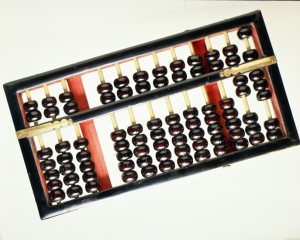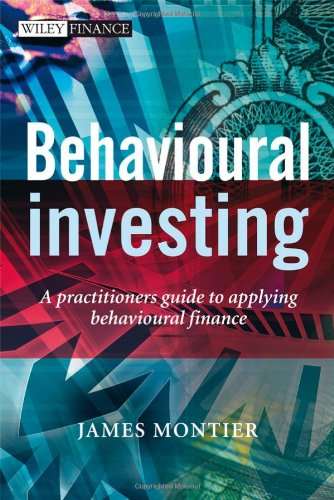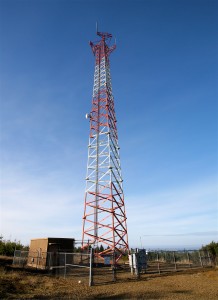Supervalu: Speculating in a grocery store with indigestion
I find very often that I seem to be the one who is interested in the investments I’m interested in. Certainly that is true of the River Rock and Mohegan casino bonds, where I seem to be the only person on the Internet who has even considered their investing attributes. So, when I find people actually looking at the kinds of things I look at, I feel a combination of gratification that my views are common, and concern that perhaps my investing thesis is too popular and has already been priced in.
 Recently there has been a spate of articles about Supervalu (SVU), a supermarket chain and grocery wholesaler that has been going through some difficult times lately, partly as the result of an acquisition of Albertson’s that imposed a high level of debt (you may recall that Damodaran demonstrated in his useful Investment Fables that more than half of all mergers fail to add value), and partly because of an overall decline in sales. Although some of this can be attributed to the slow economy, the decline has fallen lower and lasted longer than many of Supervalu’s competitors.
Recently there has been a spate of articles about Supervalu (SVU), a supermarket chain and grocery wholesaler that has been going through some difficult times lately, partly as the result of an acquisition of Albertson’s that imposed a high level of debt (you may recall that Damodaran demonstrated in his useful Investment Fables that more than half of all mergers fail to add value), and partly because of an overall decline in sales. Although some of this can be attributed to the slow economy, the decline has fallen lower and lasted longer than many of Supervalu’s competitors.
The effect of these results on their stock price has been dramatic. The company has a P/E ratio of 4.67 after adjusting for a goodwill writeoff, and their free cash flow picture is even more attractive. But on the other hand, they have a high debt burden that they are whittling away at but which is causing some concern about interest coverage issues, the decline in sales has of course led to a decline in profits, and presumably there is a limit to how low they can cut capital expenditures.
Supervalu saw a decline of about 10% of sales between fiscal year 2009 and 2010, but as some of its stores have been closed or sold off, same-store sales have declined by about 6.7%. Setting aside a goodwill writeoff, reported operating earnings have declined from $1.4 billion in 2009 to $1.2 billion in 2010, a decline of about 15%, which follows a similar proportionate decline from 2008.
Supervalu’s interest requirements of $576 million that year were thus covered by earnings a little over twice, but the company also has $150 million in operating leases, and at least some fraction of that should be considered interest rather than an operating expense for calculating coverage of fixed charges. This would lower the fixed charge coverage ratio. Offsetting this inclusion was a depreciation and amortization charge of $950 million but only $680 million in capital expenditures in fiscal year 2010. This level of capital expenditures is lower than the historical averages, but as the company is closing stores and reexamining its operations I think we can take reduction in capital expenditures as a somewhat permanent feature. This amount improves the interest coverage by another .5x, and it ultimately produces pretax cash flow to equity of approximately $900 million, or about $600 million after taxes, for 2010. This money, plus any proceeds of divestment, are available for paying down debt, and this what Supervalu has been doing–$900 million in 2009 and an additional $360 million year to date 2011.
Speaking of fiscal year 2011, year to date sales are down a bit less than 10% over last year, and operating income is down about 15% again, $504 million as compared to $607 million last year. There is an additional $188 million in excess depreciation as compared to $119 million last year, as Supervalu has apparently ratcheted down capital expenditures further. So, free cash flow to the firm is reduced by less than sales, at $692 million year to date this year and $726 million year to date last year. However, year to date capital expenditures dropped by 21% as compared to last year, and I am not sure how much capital expenditures can be cut without seriously affecting long-term earnings power, or whether the firm’s management has any better awareness than mine. At any rate, interest year to date is $303 million, producing interest coverage of 2.28x and pretax free cash flow to equity of $389 million, or roughly $260 million after taxes. On a full-year basis this translates to $520 million in free cash flow to equity and a price/free cash flow ratio of 3.61.
It is clear the the market is anticipating future declines in free cash flow, as shown by the market prices of Supervalu’s debt. As a result of the Albertson acquisition and certain other capital structure issues, they have a large number of debt issues outstanding. The notes due in 2012 sell at above par and a yield to maturity of 6.1%. However, the notes due in 2014 sell at below par with a coupon of 7.5% and a yield to maturity of 8.6%, and the notes due 2016 also sell at below par with a coupon of 8% and a yield to maturity of about 9%. In all, nearly half of Supervalu’s $6.6 billion in debts falls due within the next four years or so, and with free cash flow declining it is not clear that Supervalu can pay down this debt out of their cash flow, and may be forced to tap their credit facility, which will have $1.128 billion available in borrowing capacity, or rolling the debt forward at what current market sentiment suggests would be a higher interest rate. They could also provide for debt repayments out of asset sales, an area that the firm is also exploring. However with the aggressive repayment of debt that Supervalu is pursuing, in the space of a few years assuming that nothing derails the plan, Supervalu’s debt could be whittled down to a more manageable level.
 The company claimed in its most recent earnings call that there were signs that same-store sales declines were decelerating. However, to assume that the 3.61 price/free cash flow ratio is at all meaningful, we must assume that management is ultimately capable of arresting the decline not only in same-store sales, but in total revenues, which would require their divestitures and store closings to run their course, and also of avoiding any disruptive credit issues like a bad refinancing or having to renegotiate their debt covenants. Even so, if the 3.61 price/free cash flow ratio is a permanent feature, we can calculate that the market is pricing a permanent decline in free cash flow to the firm of 17.7% a year, as a firm’s earnings yield assuming a stable growth (or shrinking) profile should equal the required return on equity (10%) minus the company’s growth rate (here negative). I find this outcome is unlikely considering that the decline in free cash flows is already slower than that.
The company claimed in its most recent earnings call that there were signs that same-store sales declines were decelerating. However, to assume that the 3.61 price/free cash flow ratio is at all meaningful, we must assume that management is ultimately capable of arresting the decline not only in same-store sales, but in total revenues, which would require their divestitures and store closings to run their course, and also of avoiding any disruptive credit issues like a bad refinancing or having to renegotiate their debt covenants. Even so, if the 3.61 price/free cash flow ratio is a permanent feature, we can calculate that the market is pricing a permanent decline in free cash flow to the firm of 17.7% a year, as a firm’s earnings yield assuming a stable growth (or shrinking) profile should equal the required return on equity (10%) minus the company’s growth rate (here negative). I find this outcome is unlikely considering that the decline in free cash flows is already slower than that.
The real risk that concerns seems to be is that future developments will push the firm into distress and liquidation. As Damodaran reminds us in the chapter on declining companies in his useful toolkit, The Dark Side of Valuation, which contains advice for valuing companies in various states of their life cycle including the distress situation, it doesn’t matter how pessimistically we discount for earnings in year 5 if the company risks liquidation in year 2. Although the debt situation is stable, the decline in earnings has not been arrested and anyone purchasing Supervalu is probably going to have to assume that revenues and earnings will flatten and possibly even recover at some point in the future.
The prudent value investor does not rely on future projections that such an event will or will not occur, but as long as the company can continue its rapid pace of paying down debt, the company’s situation seems to be improving with each passing quarter. The company’s cash flows will definitely support the current levels of equity and debt, although interest coverage is lower than one would normally like to see. As a result, I can say that Supervalu is an attractive candidate for portfolio inclusion as it has a large upside and is still selling at a price far below the decline in earnings. However, as investing in this company requires a certain optimism, or at least not-pessimism about the future, there is a speculative element introduced that prevents this firm from being a pure value investment.









